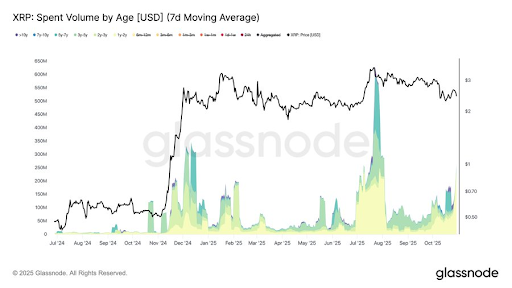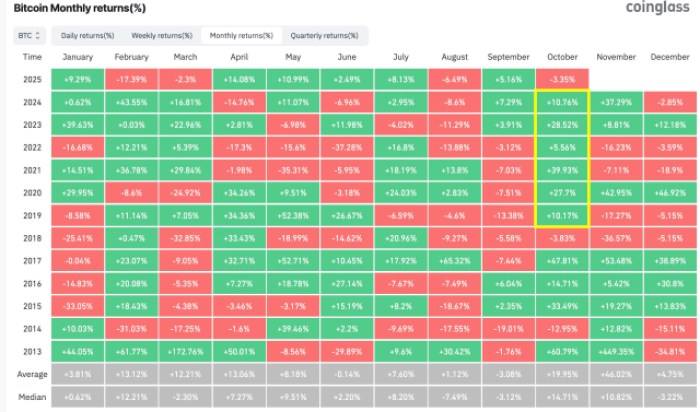 | One of the biggest talking points in cryptocurrency is "scalability." But what does this really mean? Many cryptocurrency advocates boast about the scalability of their favorite coin without having much real understanding of the meaning. In most cases, the numbers being touted as the maximum transactions per second (TPS) of a network are nothing more than an artificial constraint due to protocol limitations. In reality, these "maximum TPS" numbers don't describe a network's scaling capabilities, but rather its scaling limitations. If our goal is really to create a monetary foundation for a new global economy, it's critical that we establish a clear understanding of the meaning of scalability, and what is required to achieve scalability capable of serving the demand of a global monetary system. Scalability isn't just about "max TPS" and protocol thresholds. It's a multifaceted challenge involving network design, resource management, and real-world performance considerations. Let's take a look at some of the core principles of scalability for distributed ledger networks. ⎯⎯⎯⎯⎯⎯⎯⎯ Purpose-Driven ArchitecturePerhaps the most fundamental principle of scalability is purpose-driven architecture. In the same philosophy as phrases such as "keep it simple, stupid!" (KISS) popularized by Lockheed engineer Kelly Johnson, and "do one thing, and do it well" (DOTADIW) popularized by Unix developer Doug McIlroy, purpose-driven architecture emphasizes focus on optimization of a system for its primary function. For the sake of this discussion, that primary function is monetary payments. Imagine using a Swiss Army knife as your sole tool for driving screws, cutting, etc. While versatile, it's not the most efficient tool for any specific job. Similarly, many distributed ledger networks aim to be all-encompassing, offering functionalities such as smart contracts and decentralized applications. While this versatility can be attractive and induce demand and investment, it often comes at the expense of efficiency, having a detrimental effect on the processing of monetary payments. By concentrating solely on payments, a network can allocate resources more effectively, reduce operational costs, and handle a higher volume of transactions without incurring prohibitive expenses. When a network supports non-monetary use cases, monetary transactions must compete for network resources and priority. Unfortunately, monetary payments are often less profitable compared to just about every alternative use case. This competition results in monetary transactions being deprioritized, leading to higher fees, slower processing times, and an overall degraded user experience. Support for non-monetary use cases can even be unintentional. Networks that allow storage of arbitrary data can be exploited for non-monetary purposes. This misuse increases resource consumption (computation and storage) and operational costs, which are ultimately passed on to users through increased fees, inflation, or degraded network performance. This has been observable even in Bitcoin, with "NFT" exploits for storing arbitrary data such as Ordinal Inscriptions, Bitcoin Stamps, and BRC-20 tokens causing exponential surges in fees and confirmation times. ⎯⎯⎯⎯⎯⎯⎯⎯ Asynchronous Data Structures and Consensus ProtocolsTraditional blockchains process transactions sequentially, creating a linear chain of blocks. This sequence means that unrelated transactions can bottleneck the network because their processing is blocked by the processing of preceding transactions. This design inherently limits scalability, as all transactions are processed one after another. Asynchronous data structures, like Directed Acyclic Graphs (DAGs), allow for parallel processing of transactions that aren't dependent on each other. Multiple transactions can be processed simultaneously, significantly increasing throughput and reducing confirmation times. By enabling asynchronous processing, networks can better handle the high transaction volumes required in a global economy. The type of consensus protocol also plays a crucial role in scalability. Leader-based consensus protocols, such as Bitcoin's Nakamoto Consensus, rely on a single node (the "leader") to propose the next block of transactions. Miners compete to solve a cryptographic puzzle, and the first to solve it adds the next block to the chain. This is a synchronous process that forms bottlenecks in the system's overall performance. In contrast, leaderless consensus protocols, especially those utilizing vote propagation in Byzantine Fault Tolerant (BFT) systems, distribute the consensus process across multiple nodes without a central authority. Nodes collaborate to reach agreement on the order and validity of transactions through weighted voting mechanisms. This can be done asynchronously, ensuring that no transaction processing is blocked by the processing of other unrelated transactions. This leaderless approach reduces single points of failure and allows for more efficient processing of transactions. By not relying on a single leader, the network can achieve lower latency and higher throughput, as multiple nodes contribute to consensus simultaneously. This method is particularly effective when combined with asynchronous data structures, further enhancing the network's ability to scale and handle global transaction volumes. ⎯⎯⎯⎯⎯⎯⎯⎯ Vertical vs. Horizontal Scaling and DecentralizationIn traditional computing, scaling is often achieved by adding more servers (horizontal scaling) or enhancing existing ones (vertical scaling). However, in distributed ledger networks requiring consensus among nodes, these concepts don't apply in quite the same way. Adding more nodes to a distributed ledger network doesn't necessarily improve throughput. In fact, it can introduce additional latency because more nodes need to communicate and agree on the network's state. For distributed ledger networks, real-world throughput is actually inversely correlated to level of decentralization. As the number of nodes increases, the time required to reach consensus can also increase, slowing down the formation of consensus. While decentralization is foundational to blockchain technology, it presents a scalability challenge. The more decentralized a network is, the more complex and time-consuming the consensus process becomes. This complexity can hinder the network's ability to process transactions quickly and efficiently, which is crucial for a global-scale monetary system. ⎯⎯⎯⎯⎯⎯⎯⎯ Optimized Data DisseminationEven if a network can theoretically process thousands of transactions per second, real-world throughput depends on how quickly data can be propagated and disseminated across the network. The latency for data dissemination - the time it takes for transaction data to reach all nodes - is a critical factor in network performance. Efficient data propagation ensures that all nodes receive transaction data promptly, facilitating quicker consensus and higher throughput. Implementing optimized communication protocols, such as modern gossip protocols, can help minimize latency and improve the network's ability to handle a large volume of transactions. Unfortunately, the majority of distributed ledger networks use relatively naive mechanisms for data dissemination, such as traditional gossip protocols, causing network latency to be orders of magnitude greater than necessary. ⎯⎯⎯⎯⎯⎯⎯⎯ Node Synchronization and Quality of Service (QoS)As networks scale up to handle more transactions, node synchronization becomes crucial for maintaining efficiency. This means ensuring that all network nodes agree on the order in which they process incoming transactions. This is commonly referred to as the determination of prioritization for quality of service (QoS). Under normal conditions, nodes can easily stay synchronized because they have enough time to communicate and align on transaction ordering. However, when the network reaches maximum capacity (i.e. "saturation") keeping nodes in sync becomes much more challenging. If nodes start processing transactions in different orders due to timing differences or delays, it can create compounding backlogs and increases in latency. This misalignment results in severely degraded network performance. To prevent this, it's essential for networks to establish a common protocol for transaction ordering, especially under heavy load. By following standardized rules, nodes can maintain synchronization and process transactions efficiently, ensuring smooth network performance even when demand is high. ⎯⎯⎯⎯⎯⎯⎯⎯ Minimal Protocol-Level ConstraintsMost cryptocurrencies have protocol-level constraints - such as block size and block time - that effectively create a maximum theoretical throughput. While these limitations are often in place for security and stability, they can become bottlenecks as network demand grows. To achieve true scalability, as many throughput constraints as possible should be removed from the protocol. This approach allows scalability to be limited only by node hardware, networking, and synchronization, rather than arbitrary protocol parameters. By minimizing built-in constraints, networks can better adapt to increasing demand without sacrificing performance, and scale in correlation to Moore's Law. ⎯⎯⎯⎯⎯⎯⎯⎯ Seeing [failure] is believingUnderstanding the impact of scalability constraints often requires witnessing first-hand a system under real-world stress. Bitcoin has provided clear examples of this challenge. During periods of high demand, the Bitcoin network has experienced exponential surges in transaction fees and confirmation times. These spikes make the limitations of its scalability tangible, affecting user experience and trust in the network's efficiency. Despite Bitcoin's prominence, no cryptocurrency - Bitcoin included - has sustained a level of stress of any significance relative to what will be expected of a global monetary system. This means we haven't fully observed how scalability constraints affect most networks when pushed to their limits. Bitcoin's visible struggles under relatively insignificant usage highlight the importance of addressing scalability head-on. Without firsthand experience of such stress, it's easy to underestimate the critical nature of scalability constraints in distributed ledger networks. ⎯⎯⎯⎯⎯⎯⎯⎯ Nano's Approach: A Case Study in Effective ScalingNano exemplifies effective scaling in the cryptocurrency realm by aligning its design with the core principles of scalability. By focusing exclusively on being a digital currency optimized for payments, Nano has been architected to handle high transaction volumes with minimal latency and zero fees, making it a strong candidate for a global monetary system. Purely Monetary PurposeNano adheres to the philosophy of "do one thing, and do it well." It is designed solely for monetary transactions, avoiding the complexities and inefficiencies that come with supporting non-monetary use cases like smart contracts or decentralized applications. This singular focus ensures that all network resources are dedicated to processing payments efficiently, without competition from other types of use cases that could congest the network or inflate fees. By eliminating support for arbitrary data storage and non-monetary use cases, Nano prevents misuse of the network that would otherwise degrade performance and increase operational costs. Asynchronous "Block Lattice" Data StructureAt the core of Nano's scalability is its innovative Block Lattice architecture. Unlike traditional blockchains that process transactions sequentially in a linear chain, Nano's Block Lattice is a type of DAG in which each account consists of its own blockchain (account chain). This means transactions are asynchronous and can be processed in parallel, as they are independent of unrelated transactions. This design significantly increases throughput and reduces confirmation times, as there's no need to wait for global consensus on a single chain of blocks. Asynchronous "ORV" Leaderless BFT Consensus ProtocolNano employs an asynchronous and leaderless "Open Representative Voting" (ORV) consensus protocol. In ORV, account holders delegate their voting weight to representatives based on their account balance. These representatives participate in a Byzantine Fault Tolerant (BFT) consensus by propagating votes for transactions. Since consensus is achieved through a weighted voting system without a central leader, the network avoids bottlenecks associated with leader selection, and can process transactions more efficiently. Principal Representative MechanismNano introduces the concept of principal representatives to balance decentralization with data dissemination latency. Principal representatives are nodes that have accumulated a significant amount of delegated voting weight. While the network remains decentralized by allowing any account to choose its representative, concentrating votes among principal representatives streamlines the consensus process. This reduces communication overhead and latency, as fewer nodes need to be consulted to achieve consensus, without compromising the overall decentralization of the network. Hierarchical Gossip about Gossip ProtocolTo enhance data dissemination efficiency, Nano utilizes a hierarchical Gossip about Gossip protocol, made possible by its principal representative system. This protocol allows for faster propagation of transaction data and consensus votes across the network compared to traditional gossip protocols. By organizing nodes hierarchically, with principal representatives at higher tiers, information spreads more rapidly and efficiently. This results in orders of magnitude faster data dissemination, which is critical for maintaining low latency and high throughput in a global payment network. Opportunity Cost for Quality of Service and Spam MitigationNano addresses node synchronization and Quality of Service (QoS) by implementing an "opportunity cost" QoS model for all node operations that factors in both the account balance and the time since the last transaction. Transactions are prioritized based on this model, which segments node operations like transaction validation into round-robin queues categorized by account balance and prioritized by least recently used. This ensures fair access to network resources and mitigates the impact of spam by making it extremely difficult for malicious actors to monopolize network capacity. By disincentivizing abuse and ensuring synchronized transaction ordering across nodes, Nano maintains network efficiency even under extreme load. Removal of Protocol-Level ConstraintsNano has eliminated nearly all protocol-level constraints that could limit throughput, such as fixed block sizes or block times. This design choice allows Nano to scale in accordance with Moore's Law, with scalability constrained only by node hardware, networking, and synchronization. By removing arbitrary limits, Nano ensures that its network can adapt to increasing demand and technological advancements without requiring additional complexity or protocol changes. A Compelling Demonstration of Effective Cryptocurrency ScalingNano's approach to scalability embodies the core principles necessary for a cryptocurrency to function effectively as a global monetary system. By maintaining a purely monetary purpose, leveraging asynchronous data structures and a leaderless consensus protocol, optimizing data dissemination, implementing innovative QoS measures, and removing protocol-level constraints, Nano demonstrates that it is possible to achieve high throughput and low latency without compromising decentralization or security. This makes Nano a compelling case study in effective scaling, showcasing how thoughtful design choices can overcome the inherent challenges of distributed ledger networks. ⎯⎯⎯⎯⎯⎯⎯⎯ ConclusionScaling a distributed ledger network to meet global demands is a complex challenge requiring careful consideration of network design, resource allocation, and real-world performance. A purpose-driven architecture focused on monetary transactions, as exemplified by Nano, can address many scalability challenges by optimizing efficiency and minimizing unnecessary constraints. Other networks, while innovative, often face trade-offs impacting scalability. High hardware requirements, centralization risks, resource competition from non-monetary use cases, and protocol limitations can hinder a network's ability to process transactions efficiently on a global scale. As the cryptocurrency landscape evolves, networks prioritizing efficiency, fairness, and practical scalability are likely to lead in global adoption. It's an exciting journey ahead, and only the test of time (and demand) will tell which solutions will meet the challenges of serving a global economy. One of the biggest talking points in cryptocurrency is "scalability." But what does this really mean? [link] [comments] |

You can get bonuses upto $100 FREE BONUS when you:
💰 Install these recommended apps:
💲 SocialGood - 100% Crypto Back on Everyday Shopping
💲 xPortal - The DeFi For The Next Billion
💲 CryptoTab Browser - Lightweight, fast, and ready to mine!
💰 Register on these recommended exchanges:
🟡 Binance🟡 Bitfinex🟡 Bitmart🟡 Bittrex🟡 Bitget
🟡 CoinEx🟡 Crypto.com🟡 Gate.io🟡 Huobi🟡 Kucoin.

















Comments